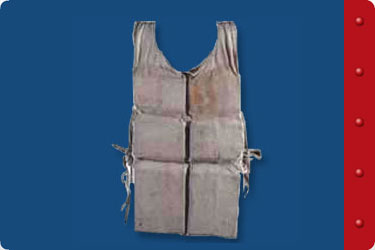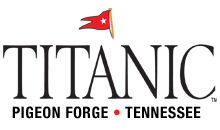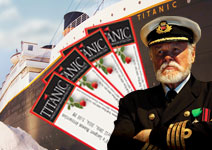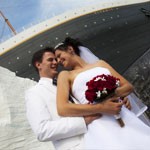Arts & Social Studies
Titanic Education Guide – Language Arts/Social Studies
TITANIC PASSENGERS
What were the travel classes of Titanic’s passengers? Who occupied First Class staterooms? Who occupied Third Class cabins? Where did Titanic’s passengers come from? What were their lives like before they boarded Titanic? What were the jobs of crew members aboard ship, and what were their accommodations? How long was their workday? How and what were they fed?
Have students write letters home from the perspective of a First or Third Class passenger or a crew member. Discuss the differences in their experiences.
At the Titanic Museum Attraction, students will receive a boarding pass with an actual passenger’s name.
TITANIC BROCHURE
Have students create safety brochures with the emergency procedures for passengers and crew aboard Titanic. Develop separate emergency rules for passengers and crew members to follow. Brochures should include a diagram of the ship, as well as evacuation routes from each area of the ship. As they develop their brochures, students might think about the different reading abilities or literacy levels and different languages of the passengers. What kind of problems would this create, and how could they be handled? Have students compare their brochures to those available today for our modern methods of transportation.
At the Titanic Museum Attraction, students will see actual Titanic brochures from 1912.
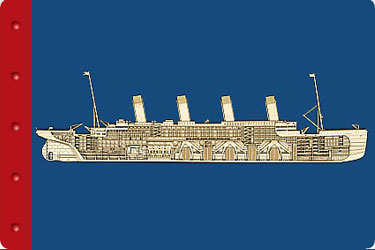
TITANIC NEWSPAPERS
Have students assume the role of newspaper editors, reporters or survivors to create the front page of a newspaper dated April 15, 1912, which tells the world about the sinking.
The front page should look like a newspaper of the time and could include articles about the building of the “unsinkable ship,” details of the voyage, feature stories about some of the people on the voyage, the sinking and interviews with survivors. Base coverage on factual information and accounts.
Ask students to name their newspaper and create a masthead based on the name and the city of publication.
At the Titanic Museum Attraction, students will see newspapers published in 1912.
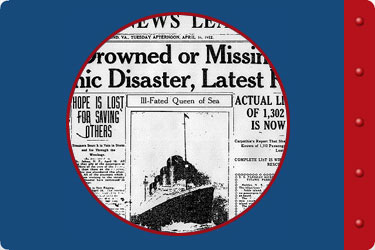
TITANIC CREW JOBS
In the early 1900s, the crew was hired for one round trip and was never guaranteed a job on the next trip. There were more than 100 different jobs on Titanic, including steward, deck, crew, engineering, fireman/stoker and able-bodied seaman.
There were more than 891 crew members (768 males and 23 females) onboard, each with different jobs that carried specific duties and responsibilities. Ask students to research the various jobs crew members had on the Titanic.
Because a job is a collection of tasks and responsibilities, and a job description lists them, have each student select one job and write a job description for it that tells an applicant what will be required of them. The descriptions should explain the necessary qualifications and skills, the position’s responsibilities, available training, salary and benefits.
Have students randomly exchange the job descriptions with one another and ask them to apply for the job they received. Their applications should include the job title; the position’s purpose aboard ship; level of education or reading, writing and math abilities; specific job skills; qualifications; previous experience; and management ability.
Have students share their final job descriptions and applications with one another.
Have students draw conclusions about the roles of crew members aboard the Titanic.
TITANIC TIMELINE
Create an illustrated timeline chronicling the major events, from the time Titanic set sail until it sank. Include at least five events on the timeline.
TITANIC POEM
Ask students to create an acrostic poem about the ship by vertically writing the word Titanic on paper or the chalkboard. Use a word or phrase beginning with each letter in Titanic that tells about the ship, its voyage and its tragic ending. Be as descriptive as possible. Illustrate the poem after it’s completed.
LEARN MORSE CODE
• • • – – – • • •
Titanic Education Guide – Arts and Social Studies – Marconi badge.
Have students create a Morse code message signaling for help. Explain how these messages were transmitted. Were warning messages received on the Titanic, or were they ignored?
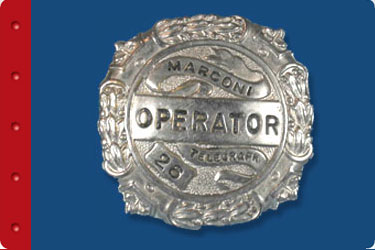
TITANIC WOMEN AND CHILDREN FIRST
The rescue order given onboard Titanic was, “Women and children first.” Have students write a short essay on whether this rule was fair and how they would respond to it had they been passengers.
At the Titanic Museum Attraction, experience getting into a lifeboat.
